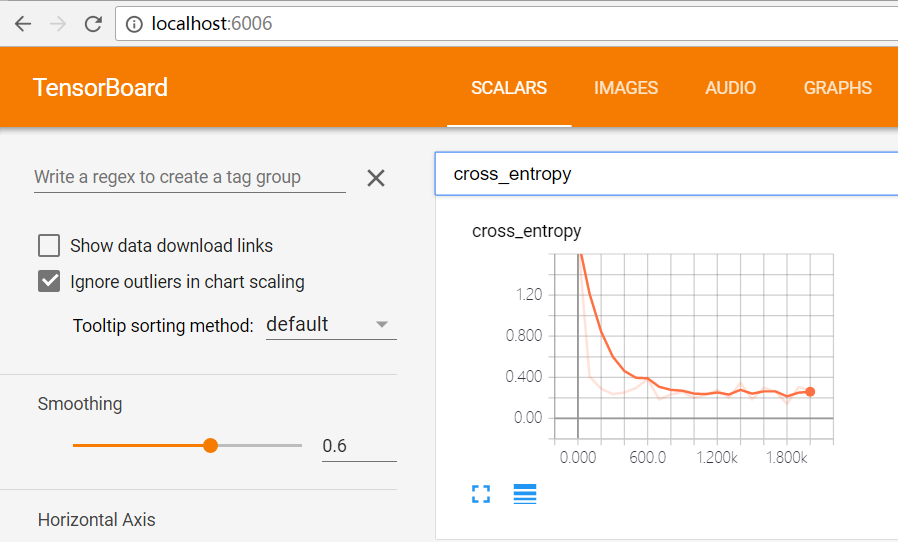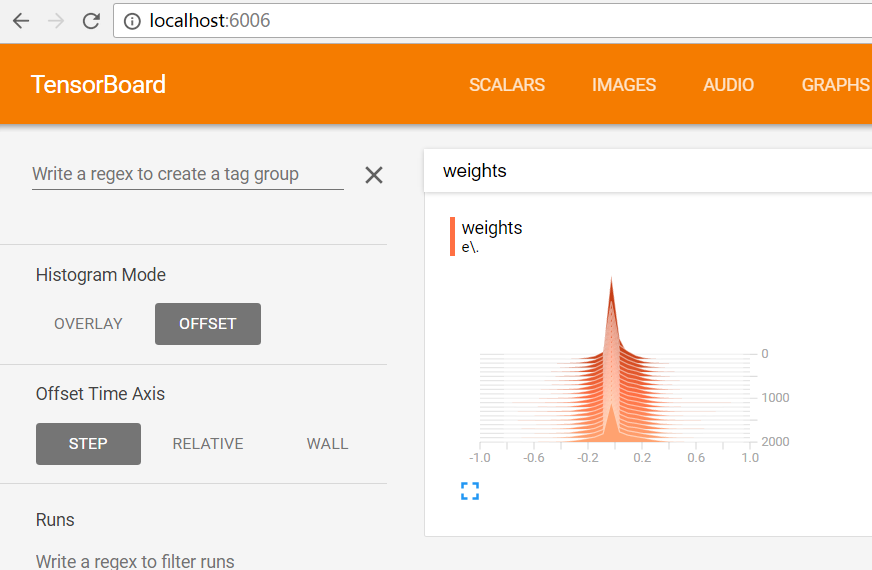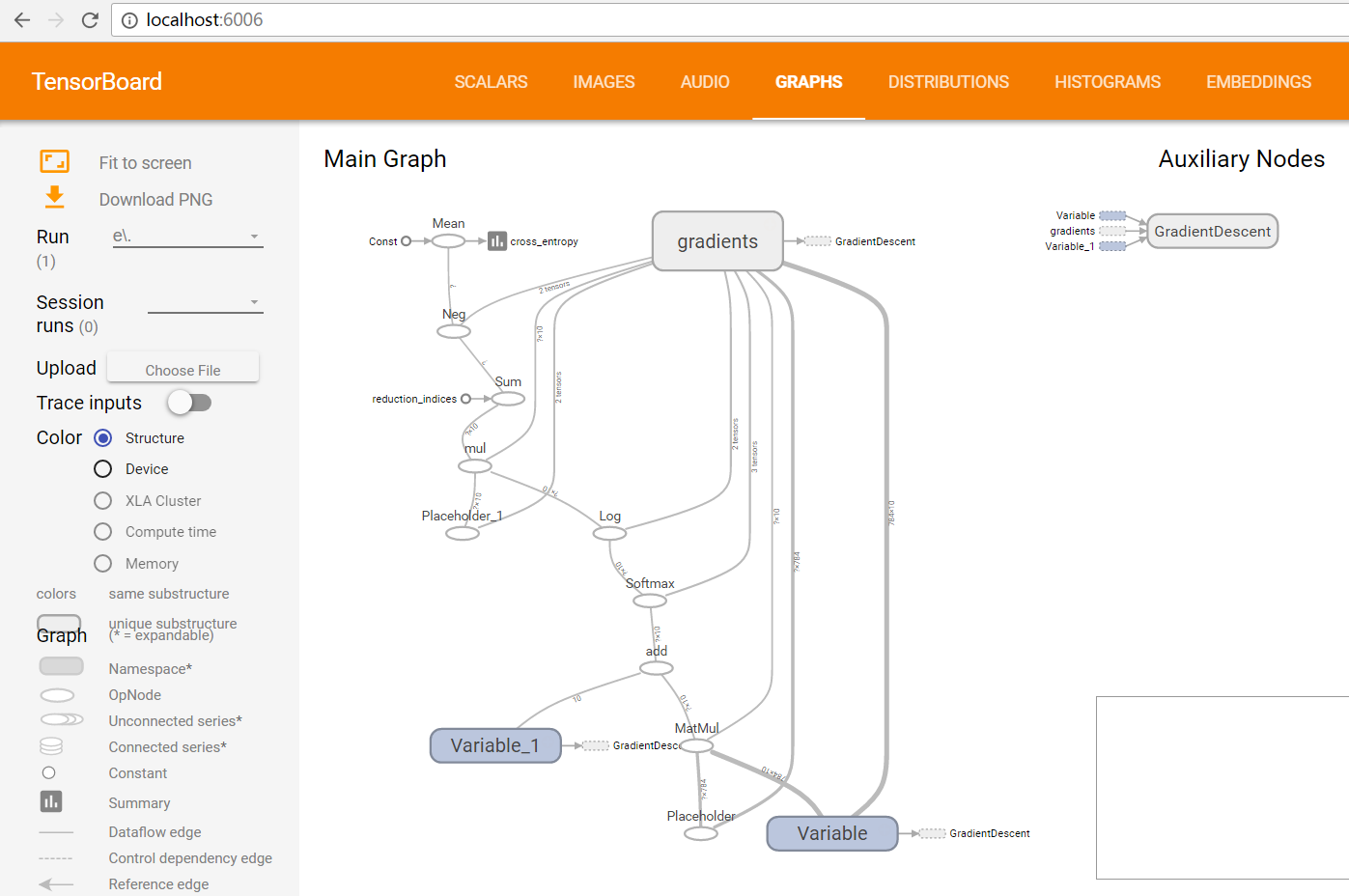代码
import tensorflow as tf
import numpy as np
from tensorflow.examples.tutorials.mnist import input_data
sess = tf.InteractiveSession()
#远程下载MNIST数据,建议先下载好并保存在MNIST_data目录下
def DownloadData():
mnist = input_data.read_data_sets("MNIST_data/", one_hot=True) #编码格式:one-hot
print(mnist.train.images.shape, mnist.train.labels.shape) #训练数据55000条
print(mnist.test.images.shape, mnist.test.labels.shape) #测试数据10000条
print(mnist.validation.images.shape, mnist.validation.labels.shape) #验证数据5000条
return mnist
def Train(mnist):
#Step1 定义算法公式Softmax Regression
x = tf.placeholder(tf.float32, shape=(None, 784)) #构建占位符,代表输入的图像,维度None表示样本的数量可以是任意的,维度784代表特征向量,由图像大小28*28转换而来
weights = tf.Variable(tf.zeros([784, 10])) #构建一个变量,代表训练目标weights,初始化为0
biases = tf.Variable(tf.zeros([10])) #构建一个变量,代表训练目标biases,初始化为0
y = tf.nn.softmax(tf.matmul(x, weights) + biases) #构建了一个softmax的模型:y = softmax(Wx + b),y指样本的预测值
y_ = tf.placeholder(tf.float32, [None, 10]) # 构建占位符,代表样本标签的真实值
tf.summary.histogram("/weights", weights)
#Step2 定义损失函数,选定优化器,并指定优化器优化损失函数
# 定义交叉熵损失函数
cross_entropy = tf.reduce_mean( -tf.reduce_sum(y_ * tf.log(y), reduction_indices=[1]) )
tf.summary.scalar('cross_entropy', cross_entropy)
# 使用梯度下降算法(学习率为0.5)来最小化这个交叉熵损失函数
train = tf.train.GradientDescentOptimizer(0.5).minimize(cross_entropy)
merged = tf.summary.merge_all()
writer = tf.summary.FileWriter("output/", sess.graph)
#Step3 训练数据
tf.global_variables_initializer().run()
for i in range(2001): #迭代次数
batch_x, batch_y = mnist.train.next_batch(100) #一个batch的大小为100, 使用一个batch的数据来训练模型
sess.run(train, feed_dict={x: batch_x, y_: batch_y}) #用训练数据替代占位符来执行训练
if (i % 100 == 0):
print("i=%d, 准确率=%g" % (i, Test(mnist, weights, biases)) )
result = sess.run(merged, feed_dict={x: batch_x, y_: batch_y})
writer.add_summary(result, i)
print("准确率=%g" % Test(mnist, weights, biases))
# 在测试数据上对准确率进行评测
def Test(mnist, weights, biases):
x = tf.placeholder(tf.float32, [None, 784]) #测试数据
y = tf.nn.softmax(tf.matmul(x, weights) + biases) #预测值
y_ = tf.placeholder(tf.float32, [None, 10]) #真实值
# tf.argmax()返回的是某一维度上其数据最大所在的索引值,在这里即代表预测值和真实值
# 判断预测值y和真实值y_中最大数的索引是否一致,y的值为1-10概率
correct_prediction = tf.equal(tf.argmax(y, 1), tf.argmax(y_, 1))
accuracy = tf.reduce_mean(tf.cast(correct_prediction, tf.float32)) # 用平均值来统计测试准确率
return sess.run(accuracy, feed_dict={x: mnist.test.images, y_: mnist.test.labels}) # 打印测试信息
def main():
mnist = DownloadData()
Train(mnist)
if __name__ == '__main__':
main()
运行TensorBoard


























 1万+
1万+











 被折叠的 条评论
为什么被折叠?
被折叠的 条评论
为什么被折叠?








